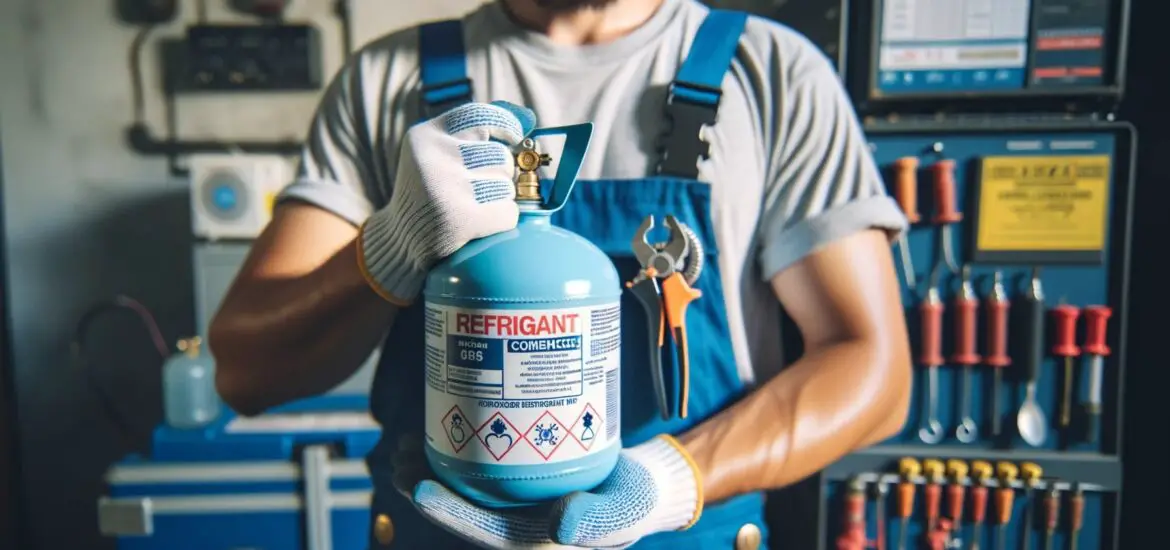If you’re asking what refrigerant is Freon, this is the guide for you. We will walk you through everything from its chemical composition to its environmental impact, so you’re fully informed.

Table of Contents
Introduction to Refrigerants
Refrigerants are the lifeblood of any cooling system. Whether it’s an air conditioner, a refrigerator, or a car’s cooling system, refrigerants play a crucial role. They circulate within the cooling system to absorb heat from the inside and release it into the external environment.
This is achieved through a phase change—from liquid to gas and back again—enabling the refrigerant to absorb and release large amounts of heat. Understanding the basic principles of refrigerants is the first step in comprehending what refrigerant is Freon and why it’s so widely used.
What Refrigerant is Freon?
The term “Freon” is actually a brand name owned by the Chemours Company, which was a spin-off from the DuPont company. Freon refers to a variety of chlorofluorocarbon (CFC) and hydrochlorofluorocarbon (HCFC) compounds.
These compounds are distinguished by their capability to effectively absorb and release heat, thereby providing efficient cooling. In addition, Freon is non-toxic and non-flammable, making it popular in numerous cooling applications.
However, it’s crucial to remember that while Freon is a refrigerant, not all refrigerants are Freon. Many other brands and types of refrigerants exist.
Types of Freon
Not all Freons are created equal. They come in different types, often referred to by an ‘R’ followed by a series of numbers and sometimes letters. The two most common types of Freon are:
R-22 (also known as HCFC-22): This type was widely used in older residential air conditioning systems. However, its production has been severely curtailed because it’s an ozone-depleting substance.
R-410A: This is a more modern and environmentally friendly Freon variant. It doesn’t deplete the ozone layer and is, therefore, the default choice for new air conditioning systems.
It’s important to know which type your system uses, especially if you’re considering a refill or an upgrade.
Freon and the Environment
Environmental concerns are paramount when discussing what refrigerant is Freon. Older types like R-22 have ozone-depleting substances. This means they contribute to the thinning of the ozone layer, which protects the Earth from harmful ultraviolet rays.
Newer types like R-410A are less harmful but still have a high Global Warming Potential (GWP). That’s why it’s important to handle Freon responsibly, including proper disposal and recycling procedures. This has led to international agreements such as the Montreal Protocol, designed to phase out the use of harmful Freons over time.
Alternatives to Freon
If you’re searching for alternatives to what refrigerant is Freon due to environmental concerns, you have options. For instance:
R-32: This has a lower GWP compared to Freon and is becoming increasingly popular.
R-134a: Widely used in automobile air conditioning, this alternative doesn’t deplete the ozone layer.
When considering an alternative, consult your service technician for compatibility with your existing system.